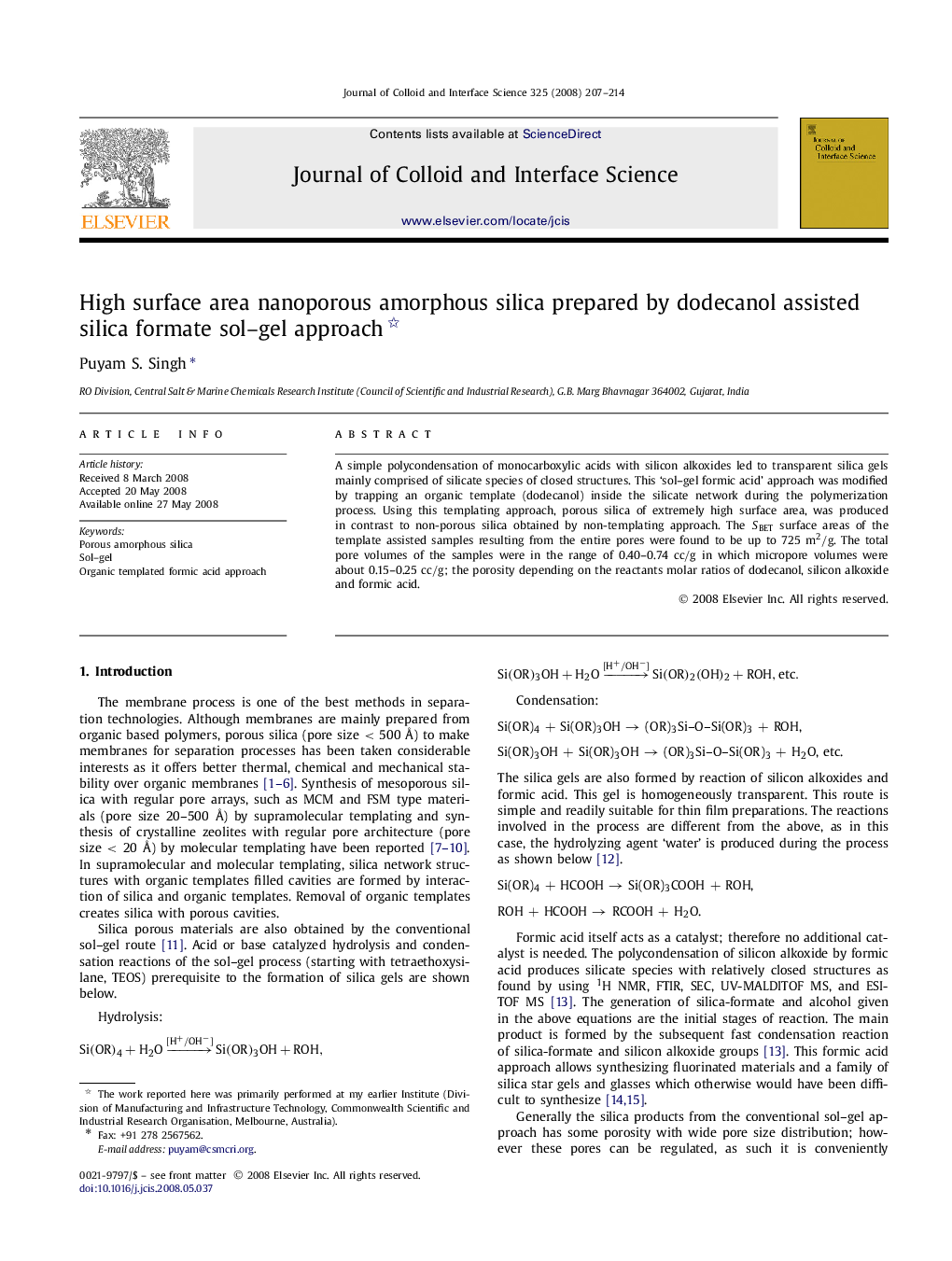| Article ID | Journal | Published Year | Pages | File Type |
|---|---|---|---|---|
| 611061 | Journal of Colloid and Interface Science | 2008 | 8 Pages |
A simple polycondensation of monocarboxylic acids with silicon alkoxides led to transparent silica gels mainly comprised of silicate species of closed structures. This ‘sol–gel formic acid’ approach was modified by trapping an organic template (dodecanol) inside the silicate network during the polymerization process. Using this templating approach, porous silica of extremely high surface area, was produced in contrast to non-porous silica obtained by non-templating approach. The SBETSBET surface areas of the template assisted samples resulting from the entire pores were found to be up to 725 m2/g. The total pore volumes of the samples were in the range of 0.40–0.74 cc/g in which micropore volumes were about 0.15–0.25 cc/g; the porosity depending on the reactants molar ratios of dodecanol, silicon alkoxide and formic acid.
Graphical abstractNanoporous silica with SBETSBET surface area up to 725 m2/g using template assisted silica-formate approach is synthesized.Figure optionsDownload full-size imageDownload as PowerPoint slide
